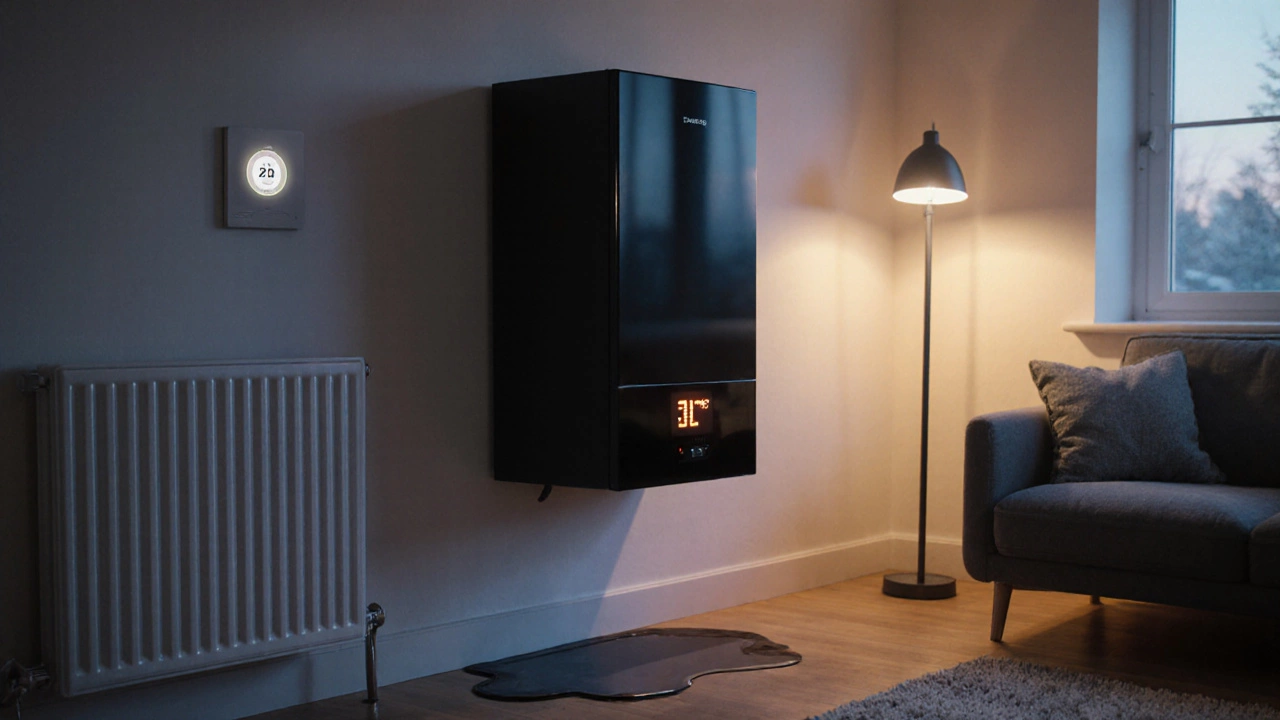Learn the top signs your boiler is broken, simple DIY checks, safety steps, and when to call a professional for fast, reliable repairs.
Boiler Troubleshooting: Quick Fixes for Common Problems
If your boiler is acting up, you don’t have to wait for a technician to figure it out. Most issues are caused by simple things you can check yourself. In the next few minutes you’ll learn how to spot the warning signs, run a few basic tests, and decide when it’s safe to keep going or call in a professional.
Spot the Symptoms
The first step is to notice what’s wrong. Here are the most common clues:
- No heat or hot water: The radiators stay cold, or the tap never gets warm.
- Strange noises: Gurgling, knocking, or whistling often means air in the system or a failing pump.
- Leaks: Water pooling around the boiler or dripping from pipe joints.
- Low pressure: The pressure gauge reads below 1 bar when the system is off.
- Pilot light out: For older gas boilers, a missing flame stops the whole thing.
Write down what you see or hear. That list will guide the next steps and help a repair person if you need one.
Step‑by‑Step Fixes
1. Check the thermostat. Make sure it’s set to a temperature higher than the current room temperature. Sometimes the dial is accidentally turned down or the battery is dead.
2. Reset the boiler. Most modern units have a reset button on the front panel. Turn the boiler off, wait 30 seconds, and press reset. This clears minor electronic glitches.
3. Bleed radiators. Air trapped inside can stop heat flow. Use a radiator key to open the bleed valve until water flows out, then close it tightly.
4. Verify the pressure. Look at the pressure gauge. If it’s below 1 bar, locate the filling loop (usually a flexible hose with two taps). Open both taps briefly until the gauge reads around 1.2–1.5 bar, then close them.
5. Look for leaks. Tighten any loose fittings you can see – use a wrench but don’t over‑tighten. If water is dripping from the boiler’s base, the seal might be worn and you’ll need a professional.
6. Check the pressure relief valve. Lift the valve’s lever for a second. Water should drip out and then stop. If it keeps running, the valve is faulty and must be replaced.
7. Clean the filter. Some boilers have a small inlet filter that can get clogged with debris. Turn the boiler off, locate the filter (check the manual), and rinse it with clean water.
If after these steps the boiler still won’t heat, makes loud noises, or you smell gas, stop immediately and call a certified technician. Gas leaks are dangerous – ventilate the area, turn off the gas supply if you know how, and get help.
By running through this checklist you’ll either get your boiler back in shape or have solid information to give a repair person. Either way you’ll save time, money, and a lot of cold evenings.
Thinking about servicing your boiler yourself? Before you start tinkering, get the scoop on what's involved. This article explores the basics of boiler maintenance, the potential risks of DIY repairs, and the essential tools you'll need. It offers practical tips and facts to help you decide if going the DIY route is right for you. Stay warm and safe with our insightful guide.

